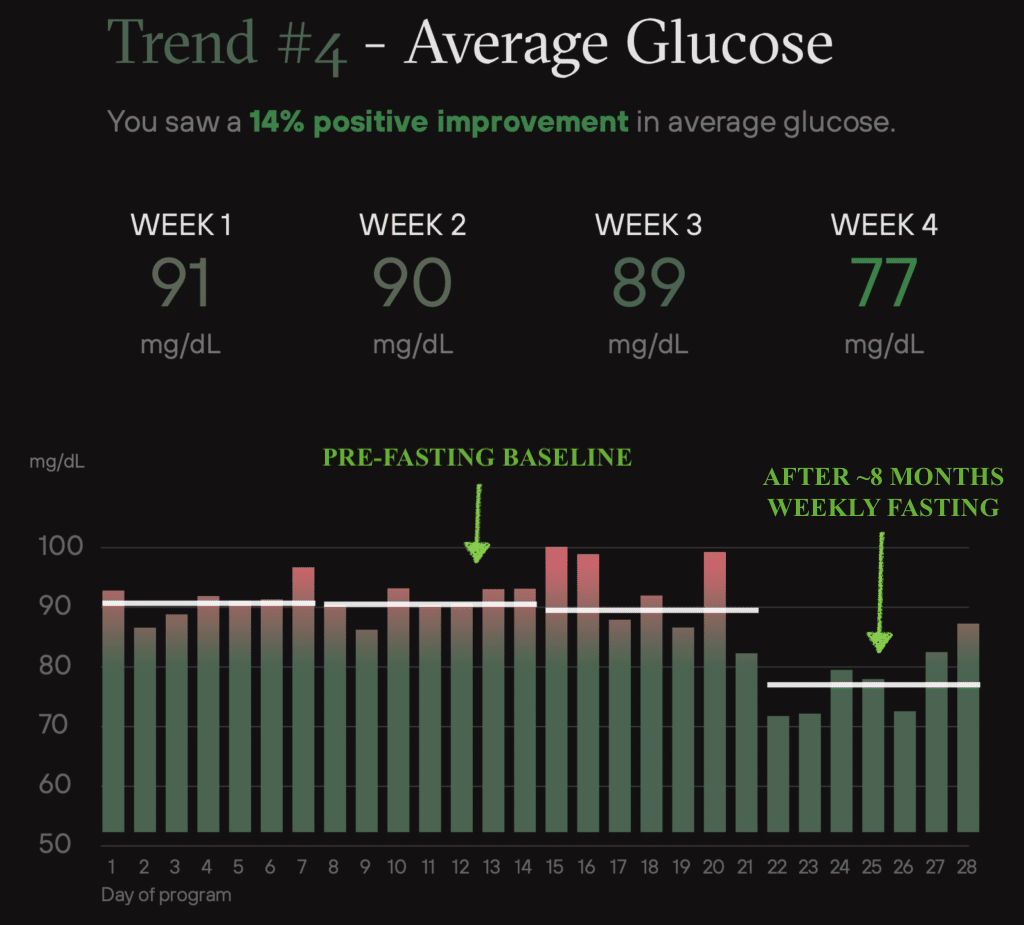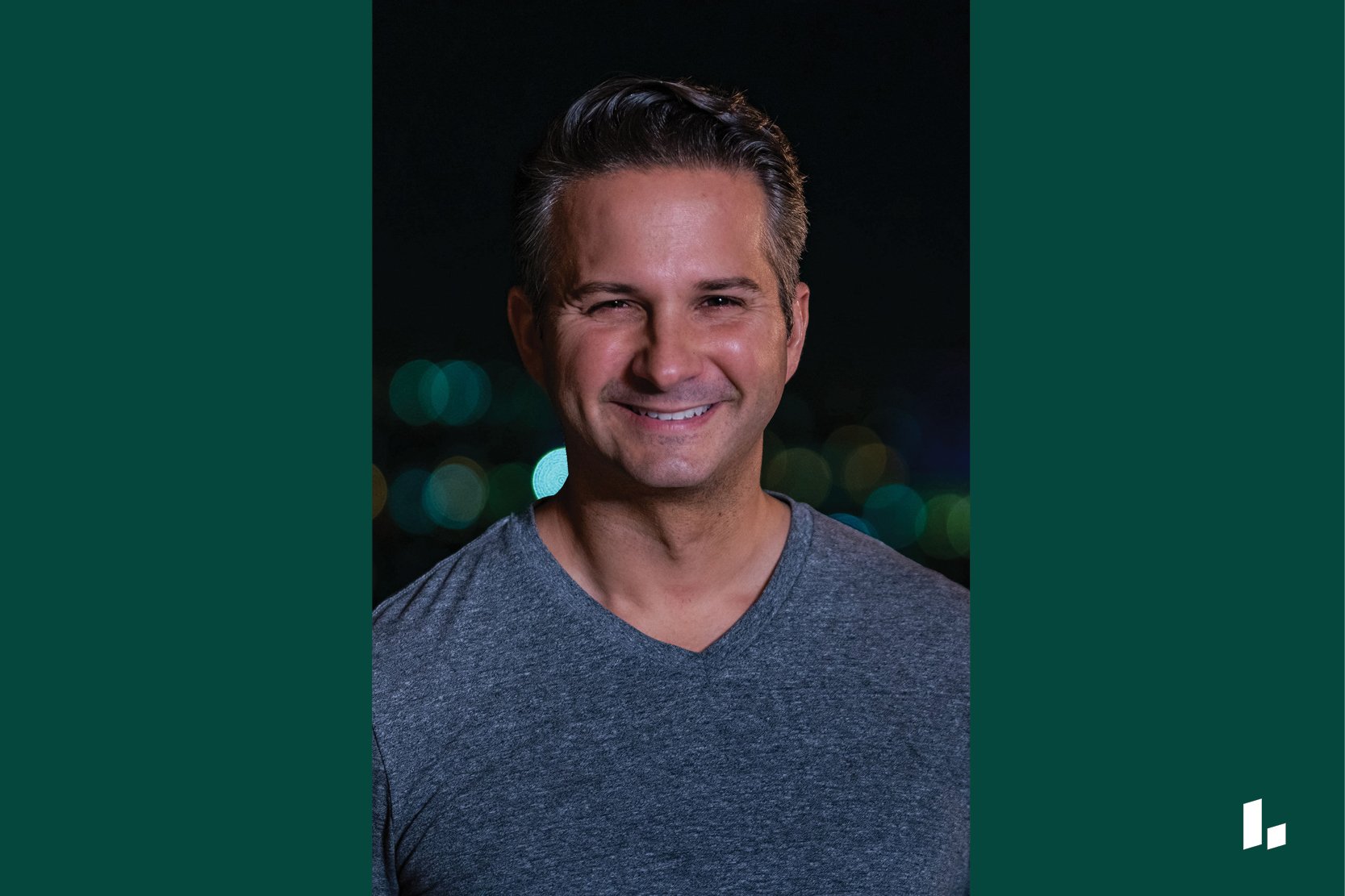Member Profile:
Who: Alex Magnin, 36
Where: Los Angeles
Time with Levels: 11 months
Most Useful Takeaway: Following a 24-hour fast one day per week decreased his fasting blood glucose—without needing to change his diet.
1. What was your health like before Levels?
I’ve always exercised regularly and been aware of my diet. I don’t like junk foods or fast foods. That said, I’ve also lived life. I go out and have drinks with friends or eat out at restaurants. If I get busy at work, I might grab takeout. I thought I was doing all that I could within the reasonable bounds of living life. The way I look at it, health isn’t everything—health serves a purpose to enjoy life.
2. Why did you want to put a CGM on your arm?
I chose to do it out of curiosity. I thought of myself as quite fit. I ran long distances, lifted weights, and did a lot of yoga. When I tried the CGM for the first time, I found that, from a metabolic perspective, there was just a lot more variability in my blood glucose than is considered optimally healthy. This was most significant in the morning when I’d get spikes that were over 140 mg/dL after eating a “normal, healthy” breakfast of fruit, yogurt, and granola.
Nearly two years ago, I started a website called The Unwinder, which stemmed from my belief that wellness was underserved on the web. I saw a lot of pretty goofy stuff that was not evidence-based on popular sites. I wanted to bring a smart, science-backed perspective about various wellness practices and products. From that background, I wanted to take a closer look at my own metabolic fitness.
Learn more:
3. What changes have you made to your diet that have made the most significant difference in your health?
After seeing my Levels data, I realized there was room for improvement. But I wanted to find something that could make a big impact without radically affecting my lifestyle. I could firm up my diet a little bit, but the benefit would probably be marginal, and the cost would be significant at this point. And that’s where I decided on a one-day-per-week, 24-hour fast, which I talk at length about on my website. I’ve been practicing it since the beginning of the year.
Usually, my fast is on Monday. I eat a regular dinner on Sunday night; then, I skip breakfast and lunch on Monday. I’ll break the fast and eat dinner on Monday night. From a lifestyle perspective, this is great. No one notices if you don’t eat breakfast and lunch once a week. It also frees up a lot of time on Monday, and I feel like I’m more productive on those days.
I also pair my hard workout with my fasting day. I like to do a long hill run, and I find I have a greater kick at the end on a fasting day compared to a day when I’m eating. Honestly, it feels as if I’m burning cleaner fuel.
4. What changes in your blood glucose have you seen since starting your fasting regimen?
My average fasting blood glucose levels have been down about 15 percent since starting. I’ve also seen a 15 to 20 percent increase in my Levels metabolic score. By not eating one day a week, I suspect I’ve trained my body to switch more quickly between being in glucose-burning mode to fat-burning mode (or ketosis) and that metabolic flexibility is a big part of metabolic health.

Credit: Alex Magnin
Now, I have a different relationship with hunger. I don’t get as hungry as easily because my body is not craving sugar like before I was fasting. I also think it’s helped my energy in my workouts. I don’t have the same bonk or crash that I would get when less metabolically healthy.
5. Have you made other changes to your diet when you’re not fasting?
I have not changed my diet at all. Usually, my wife and I cook at home, and we eat salads for lunch and fish and vegetables for dinner. But I’m not above having a pastry with my coffee for breakfast. The only variable that’s changed pre- and post-Levels is the 24-hour fast I do one day per week. In the future, I plan to use Levels a couple of times a year to check in on my health, just as I would get an annual physical at the doctor. The Levels data is another piece of continued monitoring to check my health.










